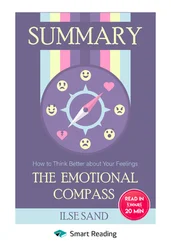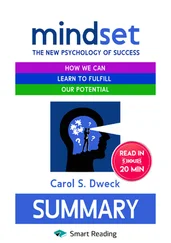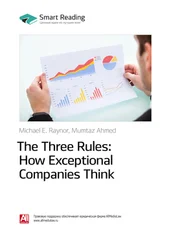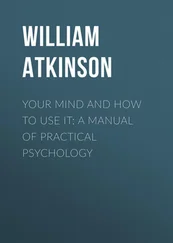Grant, J. (2011) . Denying science. Amherst, NY: Prometheus Books.
Gray, P. (2008) . The value of Psychology 101 in liberal arts education: A psychocentric theory of the university. APS Observer, 21, 29–32.
Grice, G. (2001, July 30). Slice of life: How a convicted killer’s corpse brought anatomy into the digital age. The New Yorker, pp. 36–41.
Griffin, S., Regnier, E., Griffin, P., & Huntley, V. (2007) . Effectiveness of fluoride in preventing cares in adults. Journal of Dental Research, 86, 410–415.
Griggs, R. A., Proctor, D. L., & Bujak-Johnson, A. (2002) . The nonexistent common core. American Psychologist, 57, 452–453.
Grissmer, D. (2000) . The continuing use and misuse of SAT scores. Psychology, Public Policy, and Law, 6, 223–232.
Groopman, J. (2004, January 26). The grief industry: How much does crisis counselling help—or hurt? The New Yorker, pp. 30–38.
Groopman, J. (2007) . How doctors think. Boston: Houghton Mifflin.
Groopman, J. (2009, November 5). Diagnosis: What doctors are missing. New York Review of Books, pp. 26–28.
Haack, S. (2007) . Defending science— within reason: Between scientism and cynicism. Buffalo, NY: Prometheus Books.
Hacohen, M. C. (2000) . Karl Popper: The formative years, 1902–1945. Cambridge, England: Cambridge University Press.
Hafer, C. L., & Begue, L. (2005) . Experimental research on just-world theory: Problems, developments, and future challenges. Psychological Bulletin, 131, 128–167.
Haidt, J. (2006) . The happiness hypothesis. New York: Basic Books.
Hall, H. (2008) . ‘We couldn’t say it in print if it wasn’t true’: Akavar’s version of truth in advertising. Skeptical Inquirer, 32(5), 45–49.
Hariri, A. R., & Holmes, A. (2006) . Genetics of emotional regulation: The role of the serotonin transporter in neural function. Trends in Cognitive Sciences, 10, 182–191.
Harlow, H. F. (1958) . The nature of love. American Psychologist, 13, 673–685.
Harlow, H. F., & Suomi, S. J. (1970) . The nature of love—Simplified. American Psychologist, 25, 161–168.
Harriet, H. (2008, September/October). ‘We couldn’t say it in print if it wasn’t true’. Skeptical Inquirer, 32, 46–49.
Harrington, A. (2008) . The cure within. New York: Norton.
Hastie, R., & Dawes, R. M. (2010) . Rational choice in an uncertain world. Thousand Oaks, CA: Sage.
Hearst, E. (1979) . The first century of experimental psychology.
Hillsdale, NJ: Erlbaum. Hendrie, C. (2005) . Book faults achievement in charter schools. Education Week, p. 3.
Henrich, J., Heine, S. J., & Norenzayan, A. (2010) . The weirdest people in the world? Behavioral and Brain Sciences, 33, 1–75.
Henriques, G. (2011) . A new unified theory of psychology. New York: Springer.
Herman, C. P., & Polivy, J. (2005) . Normative influences on food intake. Physiology & Behavior, 86, 762–772.
Hill, C. A. (2010) . What cognitive psychologists should find interesting about tax. Psychonomic Bulletin & Review, 17, 180–185.
Hilton, D. J. (2003) . Psychology and the financial markets: Applications to understanding and remedying irrational decision-making. In I. Brocas & J. D. Carrillo (Eds.), The psychology of economic decisions: Rationality and well-being (Vol. 1, pp. 273–297). Oxford: Oxford University Press.
Hines, T. M. (1998) . Comprehensive review of biorhythm theory. Psychological Reports, 83, 19–64.
Hines, T. M. (2003) . Pseudoscience and the paranormal (2nd ed.). Buffalo, NY: Prometheus Books.
Hitsch, G., Hortacsu, A., & Ariely, D. (2010) . Matching and sorting in online dating. American Economic Review, 100, 130–163.
Holton, G., & Roller, D. (1958) . Foundations of modern physical science. Reading, MA: Addison-Wesley.
Honda, H., Shimizu, Y., & Rutter, M. (2005) . No effect of MMR withdrawal on the incidence of autism: A total population study. Journal of Child Psychology and Psychiatry, 46, 572–579.
Huber, P. W. (1990) . Pathological science in court. Daedalus, 119, 97–118.
Hulme, C., & Snowling, M. J. (2011) . Children’s reading comprehension difficulties: Nature, causes, and treatments. Current Directions in Psychological Science, 20, 139–142.
Humphrey, N. (1996) . Leaps of faith. New York: Copernicus.
Immen, W. (1996, August 8). Could you repeat that in Klingon? Globe & Mail (Toronto).
Insurance Institute for Highway Safety (2005, July 16). If you drive while phoning you’re far more likely to get into a crash in which you’ll be injured. Status Report, 40(6), 1–3.
Ioannidis, J. (2004) . Contradicted and initially stronger effects in highly cited clinical research. JAMA, 294, 218–228.
Isaacson, W. (2011) . Steve jobs. New York: Simon & Schuster. Jacobson, J. W., Foxx, R. M., & Mulick, J. A. (Eds.). (2004) . Controversial therapies for developmental disabilities: Fads, fashion, and science in professional practice. Mahwah, NJ: Erlbaum. Jaffe, E. (2005) . How random is that? Students are convenient research subjects but they’re not a simple sample. APS Observer, 18(9), 20–30. Jaffe, E. (2011, September). Identity shift. APS Observer, 24, 12–16.
Johnson, S. (2007) . The ghost map. New York: Riverhead Books.
Jordan, S. D. (2007, May). Global climate change triggered by global warming. Skeptical Inquirer, 31, 32–45.
Joyce, N. (2010, March). Spotting the enemy. APA Monitor, pp. 24–25.
Judelsohn, R. G. (2007, November/December). Vaccine safety: Vaccines are one of public health’s great accomplishments. Skeptical Inquirer, 31(6), 32–35.
Kagan, J. (2006) . An argument for mind. New Haven, CT: Yale University Press.
Kahneman, D. (1973) . Attention and effort. Englewood Cliffs, NJ: Prentice Hall.
Kahneman, D. (2011) . Thinking, fast and slow. New York: Farrar, Straus & Giroux.
Kalat, J. W. (2007) . Biological psychology (9th ed.). Belmont, CA: Wadsworth.
Kalb, C., & White, E. (2010, May 24). What should you really be afraid of? Newsweek, p. 64.
Kantrowitz, B., & Kalb, C. (2006, March 13). Food news blues. Newsweek, 44–54.
Kaplan, M., & Kaplan, E. (2007) . Chances are: Adventures in probability. New York: Penguin Books.
Keating, D. P. (2007) . Understanding adolescent development: Implications for driving safety. Journal of Safety Research, 38, 147–157.
Keith, K. D., & Beins, B. C. (2008, August). My students believe what? Psychological myths and sound science in the undergraduate classroom. Paper presented at the meeting of the American Psychological Association, Boston.
Keizer, K., Lindenberg, S., & Steg, L. (2008, November 20). The spreading of disorder. Science, 322, 1681–1685.
Kelly, I. W. (1997) . Modern astrology: A critique. Psychological Reports, 81, 931–962.
Kelly, I. W. (1998) . Why astrology doesn’t work. Psychological Reports, 82, 527–546.
Kelly, L. (2005) . The skeptic’s guide to the paranormal. New York: Thunder’s Mouth Press.
Kenney, C. (2008) . The best practice: How the new quality movement is transforming medicine. New York: PublicAffairs Books.
Kida, T. (2006) . Don’t believe everything you think: The 6 basic mistakes we make in thinking. Amherst, NY: Prometheus Books.
King, F. (1993, March). Science literacy and public support of science. APS Observer, 6(2), 2–11.
Klein, D. N. (2010) . Chronic depression: Diagnosis and classification. Current Directions in Psychological Science, 19, 96–100.
Knight, G. P., Johnson, L., Carlo, G., & Eisenberg, N. (1994) . A multiplicative model of the dispositional antecedents of a prosocial behavior: Predicting more of the people more of the time. Journal of Personality and Social Psychology, 66, 178–183.
Kolata, G. (2009, August 20). One injured hamstring, a string of treatments. New York Times, p. E8.
Читать дальше












